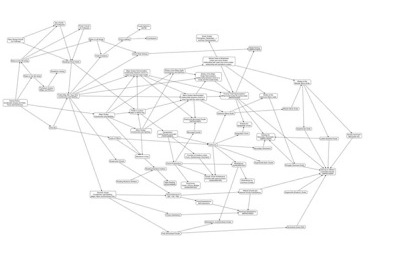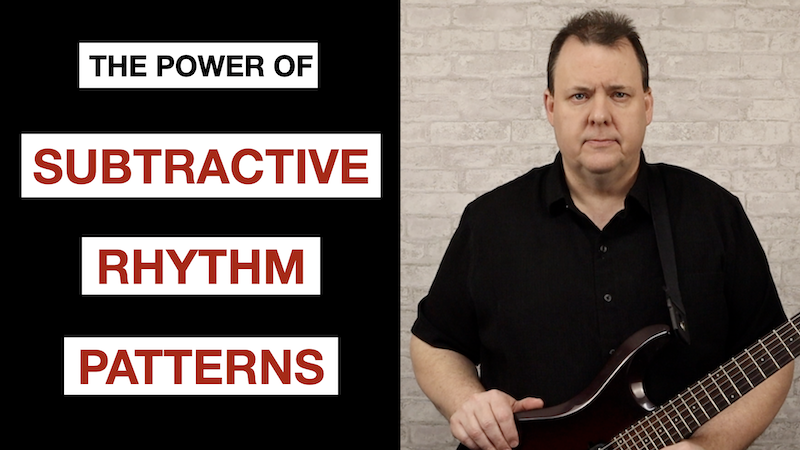The Power of Subtractive Rhythm Patterns


Are you ready to give your rhythm playing a fresh, energetic twist?
In this video, we’re diving into the world of subtractive rhythm patterns—a simple yet powerful technique that can breathe new life into your riffs.
With just one note and some creative rhythm shaping, you’ll discover how to craft grooves that stand out and captivate your listeners.
Whether you’re a beginner or a seasoned guitarist, this method will challenge you to think differently about rhythm and unlock new creative possibilities.
Let’s explore how subtracting a few notes can transform your playing into something truly extraordinary!
Video Transcript
Subtractive Rhythm Pattern 1
Step one in working with subtractive rhythm is simply to choose a subdivision to work with. It's easiest to start with one subdivision. Once you explore this idea enough, you can absolutely mix things up and use multiple subdivisions within a measure or two, depending on the length of your phrases
Today, we're going to start with a measure of triplets. So, let's play through a few measures of triplets to get that subdivision in our ear. Once we have the subdivision established, we will subtract some notes from it and create a really cool rhythm.

Now that we've played a few measures of triplets, let's start subtracting some of these notes. When you begin this process, it's best to start with a recognizable pattern. Doing so makes it easier for your brain to understand what's happening, making it catchier for both you and your listener.
Once you observe what we are doing with these rhythms, you can experiment with patterns that aren't as easily recognizable as the ones we will cover today, and just see how that goes. However, I've always found that the easier it is to identify the pattern, the catchier these riffs tend to become.
For this one, we’re going to take away every fourth note, okay? And when we do that, we end up with this. Let’s count and clap the rhythm before we play it.

All right, that rhythm sounds cool just like that. We're going to add one measure of triplets before this rhythm for the play-along section. Let's go ahead and play through this example together.

Subtractive Rhythm Pattern 2
For this second example, let's use a sixteenth-note pulse. The pattern we create will work best in a measure of 3/4. Let's start by playing through a few measures of 3/4 with sixteenth notes.

When you do this on your own, you can create any pattern you want, but I want to stick with an easily recognizable pattern for these examples. For this one, we will remove every third note. This is what we end up with. Let's clap and count this rhythm before we take it to the guitar.

Let’s play it now.

Subtractive Rhythm Pattern 3
This concept works with any subdivision, so let's use eighth notes for this example. Let’s play a few measures of eighth notes before we subtract notes to create our pattern.

For the pattern, let’s play every third note. We will need to stretch this pattern across three measures before it starts over again on beat one. This is what the rhythm looks like. Let's clap and count this before we take it to the guitar.

For the play-along section, we will add one measure of eighth notes before the pattern begins. Let’s play this example together.

Final Thoughts
Today, we used only one note for each riff we played. If you like the rhythms, feel free to add as many notes as you want to see how it changes the sound. Take some time to experiment with the concept of subtractive rhythm. Create your own patterns and integrate them into your music. Remember, even the simplest ideas can become extraordinary with the right approach.
If you want to learn the best way to practice any rhythm, I recommend you check out my free guide, “Six Easy Steps To Learn and Play any Rhythm with Perfect Timing.” In this video, I guide you through each step of the process and show you how to practice rhythm effectively for maximum progress.
Click on the link below this video. To get your free video today.
Six Easy Steps To Learn and Play any Rhythm with Perfect Timing